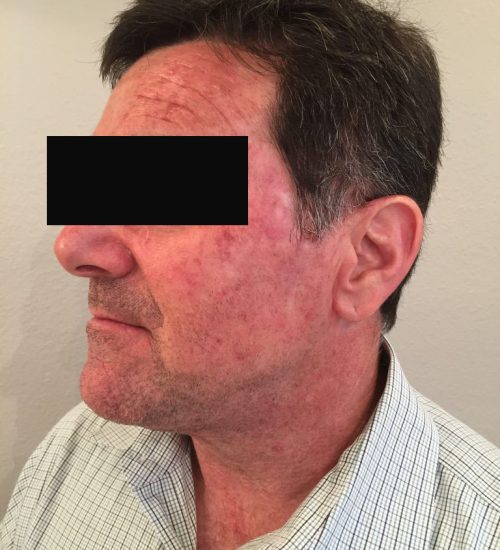- (318) 933-DERM (3376)
- Info@Cenladerm.com
- Monday - Thursday 8:00AM - 5:00PM - Friday 8:00AM - 01:00PM
- (318) 933-DERM (3376)
- Info@Cenladerm.com
-
Monday - Thursday 8:00AM - 5:00PM
Friday 8:00AM - 01:00PM

Precancerous skin growths, also called actinic keratoses or pre-cancers, are abnormal growths caused by chronic, excessive sun exposure. Patients describe them as dry spots of skin that “come and go.”
Pre-cancers appear as a rough, red, scaly patch, bump, or horn on the skin that will not heal. They are commonly found on body areas chronically exposed to sun, such as the scalp, face, ears, neck, chest, arms, hands, and lower legs. Pre-cancers can also appear on the lips and usually present as a chronically chapped bottom lip.
Sometimes, these pre-cancerous spots are barely visible; instead, they are associated with a burning, sensitive, or painful sensation when touched. Some precancerous lesions will develop into squamous cell carcinoma (SCC), the second most common form of skin cancer. Therefore, early and effective treatment of these abnormal skin lesions is crucial.

Precancerous skin growths, also called actinic keratoses or pre-cancers, are abnormal growths caused by chronic, excessive sun exposure. Patients describe them as dry spots of skin that “come and go.”
Pre-cancers appear as a rough, red, scaly patch, bump, or horn on the skin that will not heal. They are commonly found on body areas chronically exposed to sun, such as the scalp, face, ears, neck, chest, arms, hands, and lower legs. Pre-cancers can also appear on the lips and usually present as a chronically chapped bottom lip.
Sometimes, these pre-cancerous spots are barely visible; instead, they are associated with a burning, sensitive, or painful sensation when touched. Some precancerous lesions will develop into squamous cell carcinoma (SCC), the second most common form of skin cancer. Therefore, early and effective treatment of these abnormal skin lesions is crucial.
How do precancerous lesions occur?
Precancerous skin lesions are directly related to one’s lifetime exposure to the sun, or ultraviolet (UV) light. Men are more likely to develop these lesions; however, both sexes are affected. Precancerous lesions usually present in the 4th or 5th decade of life, but they may develop sooner in the 2nd-3rd decade of life if their is a history of heavy cumulative sun exposure, tanning bed use, or multiple sunburns. Generally, people with lighter skin tones are affected more because lighter skin tones contain less melanin pigment, which naturally protects the skin from UV exposure. Additionally, smoking increases the risk of precancerous skin lesion development.
What are treatment options for pre-cancers on the skin?
Precancerous lesions should be treated to prevent their progression into squamous cell carcinoma. The most common treatment is cryotherapy, or freezing, which involves destroying the lesion with the use of liquid nitrogen. Topical therapies are also an option and names of these include 5-fluorouracil (5-FU, Tolak, Fluoroplex, Carac), imiquimod (Aldara, Zyclara), ingenol mebutate (Picato) and diclofenac (Solaraze). These prescription creams treat visible pre-cancerous lesions, as well as microscopic lesions that cannot yet be detected. Photodynamic therapy (PDT) is a means of treating an entire face for precancerous lesions. This procedure combines a topical solution (aminolevulinic acid) that is activated by various laser and light technologies to target precancerous lesions. Chemical peels can also decrease the amount of pre-cancers on the face, but this treatment is not covered by insurance.
Any suspicious lesions that do not respond to the above treatments may be biopsied to rule out an early skin cancer. The use of sunblock and proper sun protection is critical inpreventing both precancerous and cancerous skin lesions. It’s never too late to start
taking proper sun precautions!
Copyright © 2024 Cenla Dermatology and Mohs Surgery. All Rights Reserved.